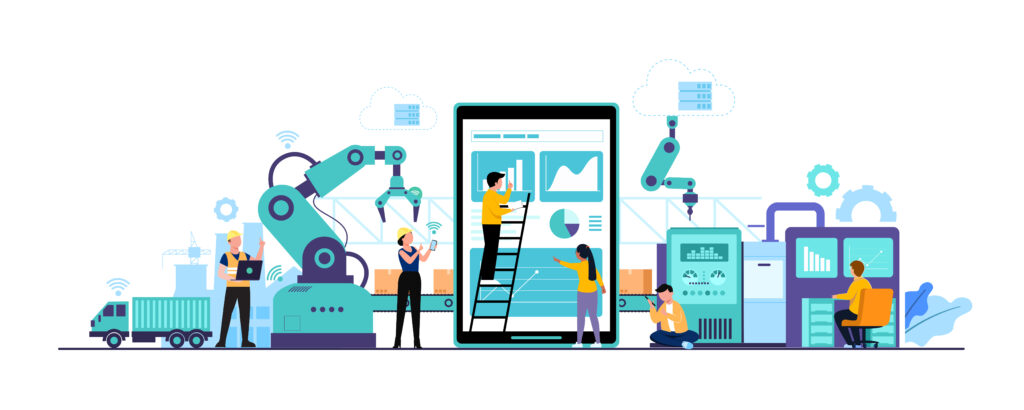Automation

Automation refers to the use of technology and systems to perform tasks and processes with minimal human intervention. It aims to streamline and optimize workflows, improve efficiency, reduce errors, and save time and resources. Automation can be applied across various industries and functions, including manufacturing, information technology, finance, healthcare, and more.
Here are some key aspects and examples of automation:
Robotic Process Automation (RPA): In RPA, software robots or “bots” are programmed to mimic human actions, such as data entry, data extraction, and repetitive tasks. RPA is commonly used in business processes like data entry, payroll processing, and customer service.
Industrial Automation: This includes the use of machines and control systems to automate manufacturing and production processes. Examples include automated assembly lines, robotics in car manufacturing, and CNC (Computer Numerical Control) machines in machining processes.
Information Technology (IT) Automation: IT automation involves using scripts, software, and tools to automate tasks like server provisioning, software deployment, and system monitoring. This can save time for IT professionals and reduce the risk of human error.
Home Automation: Smart home devices and systems allow homeowners to automate tasks such as controlling lights, thermostats, security cameras, and entertainment systems through a central hub or smartphone app.
Process Automation: Many businesses use automation to streamline internal processes, such as inventory management, order processing, and customer relationship management (CRM). Workflow automation tools help organizations design, execute, and monitor complex business processes.
Chatbots and Virtual Assistants: These AI-driven tools automate customer support and information retrieval tasks. They can answer frequently asked questions and provide assistance without human intervention.
Autonomous Vehicles: In the automotive industry, automation is advancing rapidly with self-driving cars and trucks. These vehicles use sensors, cameras, and AI algorithms to navigate and make decisions on the road.
Supply Chain Automation: Companies can automate various aspects of their supply chains, from inventory management and demand forecasting to order fulfillment and logistics.
Financial Automation: In finance, automation is used for tasks like electronic payments, invoice processing, and algorithmic trading.
Healthcare Automation: Automation is used in healthcare for tasks like patient data management, appointment scheduling, and robotic surgery.
Agricultural Automation: Automated machinery and drones are used in agriculture for tasks like planting, harvesting, and monitoring crop health.
Energy and Utilities Automation: The energy and utilities sector employs automation for tasks such as power grid management, smart meters, and energy-efficient systems.
Automation is driven by advances in technology, including artificial intelligence (AI), machine learning, sensors, and the Internet of Things (IoT). While automation can lead to increased productivity and cost savings, it also raises questions about job displacement, cybersecurity, and ethical considerations. Finding the right balance between human labor and automation is an ongoing challenge for businesses and policymakers.